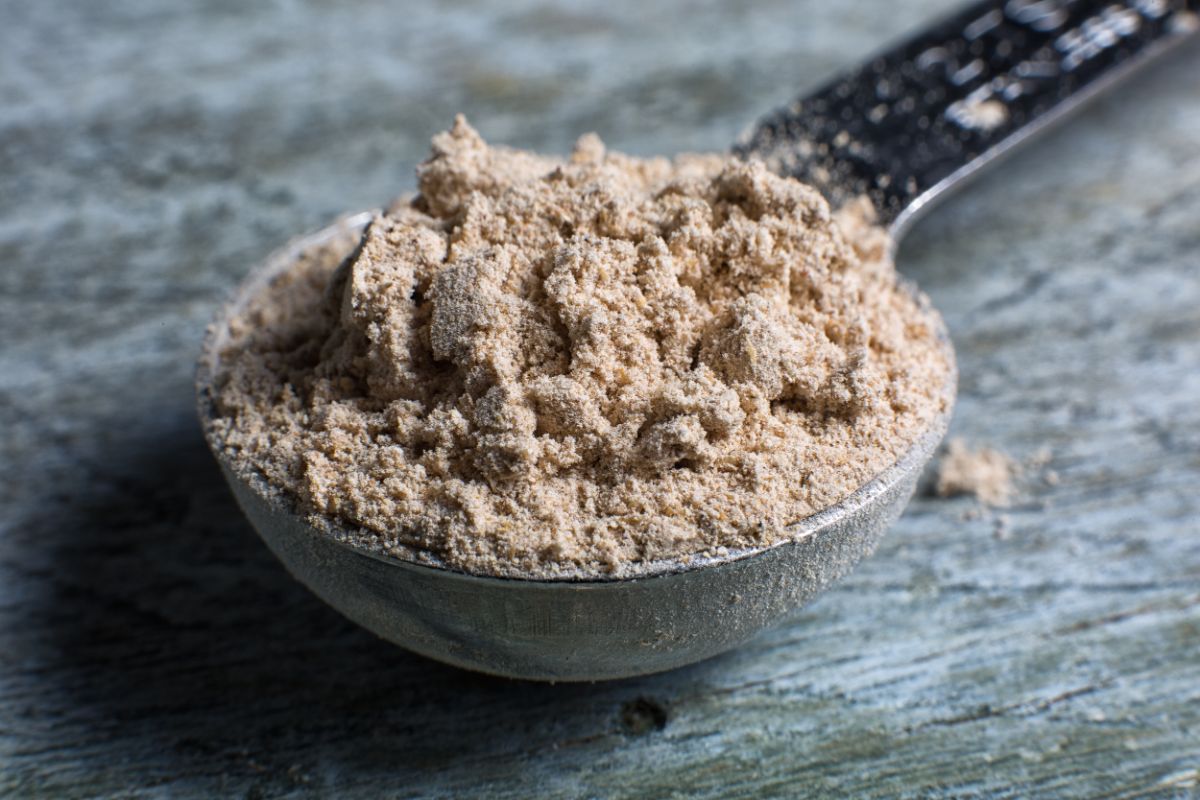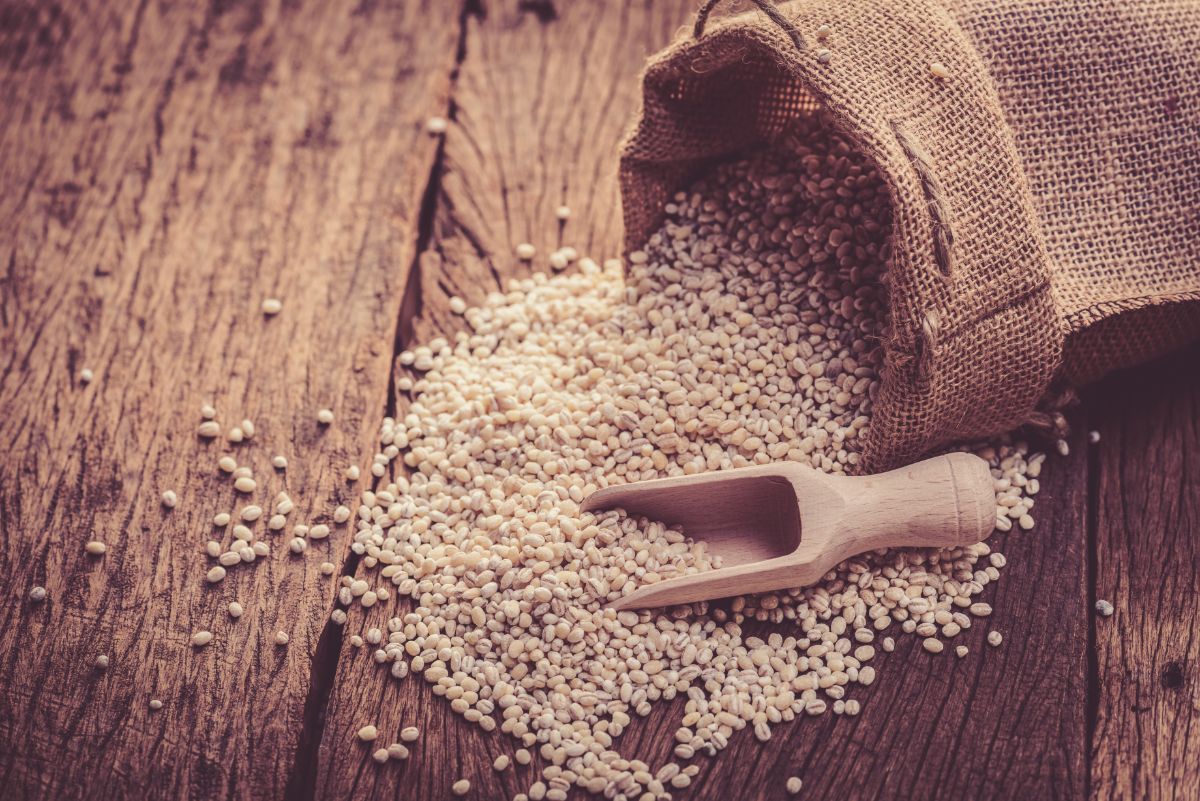Malted flour, also known as malted barley flour, is often used as a replacement for other kinds of bread flours that typically have low diastatic activity.

Diastatic activity is the process in which enzymes convert starches into sugar or maltose. When used in baking, adding malted flour to other wheat flours typically results in a softer, moister product.
This particular kind of flour is made from barley that has been allowed to germinate or convert those starches into sugar. It is then steam-dried, hulled, finely ground, and sifted before use. Most malted barley flours are made from barley plants that have six seeds per head.
Malting Process
There are three steps to the malting process:
1. Steeping
During this phase, the barley alternates between being drained and submerged in large tanks for up to 48 hours at a time. This process is repeated until the moisture of 40 percent or higher is reached.
This is crucial for enzyme development. It’s also the start of the germination process.
2. Germination
The grain is then transferred into a separate compartment for germination. Germination continues under carefully controlled, oxygen, temperature, and humidity levels.
The length of time for this process is about 5-7 days. During this process, the complex carbohydrates and proteins are broken down.
3. Drying
Also known as kilning, this is the final step. The malt is dried on a roaster or kiln to prevent any further germination. This helps to preserve the malt’s natural enzymes and rich flavors.

Drying or roasting malt for longer periods of time or at higher temperatures tends to decrease the number of enzymes but also creates a more unique flavor.
There are two kinds of malted flour that are produced: diastatic and nondiastatic.
Diastatic malt is created from whole grain barley malt after it’s been dried at low heat. This is done to keep the enzymes in the malt active.
The enzymes help to break down starches in flour and help give bread, cookies, pies and other baked items a softer texture. It also helps to keep these products moist and extend their useful life.
Diastatic malt is often used instead of sugar in certain yeast-based items. It is used in multigrain bread to help with fermentation and browning the bread’s crust.
Nondiastatic malt is barley malt that has already used the natural enzymes to break down starches into sugar. The malted barley extract gives the yeast extra flavor and nutrients.
Nondiastatic malt helps to give bagels extra flavor and a chewy exterior. It’s also used to give muffins a softer texture. Both kinds of malt have been used by pizza manufacturers to help brown their products’ crusts and for providing added flavor.
Malted barley flour contains a bit of gluten and fiber. The low gluten content makes it a popular choice for pizza crust, pretzels, crackers, and other foods.
The dough is usually softer and has a lighter texture. It also contains tannins, which are helpful for reducing headaches and relieving migraines.
Diastatic malt is commonly used in baking bread and other tasty treats.
Here’s a popular recipe for french bread that you can make at home:
You’ll need the following ingredients. You can put them in a large mixing bowl and let them sit for about 10-15 minutes:
- 2 cups of warm water
- 1 tablespoon of dry yeast
After the yeast has dissolved and started foaming, you can then add:
- 5 cups of unbleached flour
- 1 teaspoon of diastatic malt
- 1 tablespoon of avocado oil or olive oil
- 1 teaspoon of salt
1. Stir this mixture thoroughly for about 5 minutes. This will help to reduce the amount of time for the mixture to rise for the first time.
2. Add another teaspoon of diastatic malt and another 1-2 cups of unbleached flour before kneading the dough. This will help prevent the dough from becoming sticky or clumping up in your hands. Stir the mixture for another few minutes until you can’t mix it anymore. Then it’s time to pour the dough out onto a table or other flat, floured surface for kneading.
3. Knead the dough for about 10-15 minutes. The dough should be spring back into shape if you touch it gently.
4. Put your dough into an oiled bowl to let it rise. The bowl should be placed in a warm area, such as under a lamp or natural sunlight or in your oven with the oven light turned on. You should allow the dough to sit for either an hour or until it doubles in size, whichever comes first. If your dough is still soft, add another ¾ cup of unkneaded flour to the mixture and knead vigorously. Return your dough to the oiled bowl to allow it to rise.
5. Place your dough back on the floured surface and knead it again for another minute or two. Split the dough in half. From there, you’ll be molding each half into French bread-style loaves. Put these loaves on a large cookie sheet.
6. Cut a few diagonal slits on the top of each loaf.
7. Place the loaves in a warm spot for about half an hour. They should double in size.
8. Preheat your oven to 375 degrees. Put your loaves in the oven for about 40 minutes. Check on them halfway through to ensure that the bottoms of the loaves are not getting too browned or burned. Feel free to rotate them if you want to.
9. Remove your bread from the oven when it’s done. Place your loaves on a wire rack or cutting board when they’re ready to eat.
Malt products are available over the counter at most grocery and health food stores. It has been marketed toward health-conscious consumers because it is all-natural and is free of GMOs.
Read the product labels carefully so that you know the ingredients or if you have any allergy concerns. Malted flour is used every day to make a wide variety of baked goods. They help to add flavor and texture to almost any creation.
